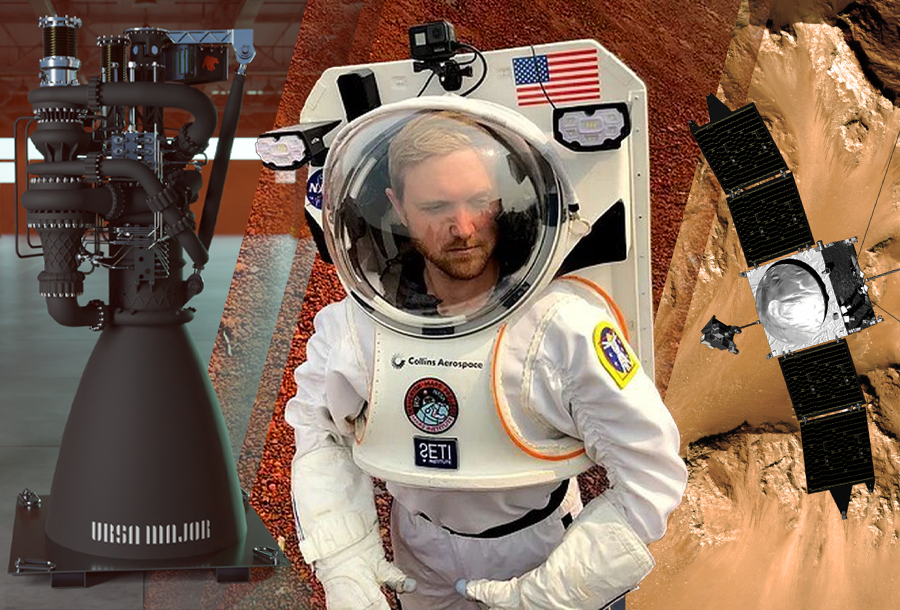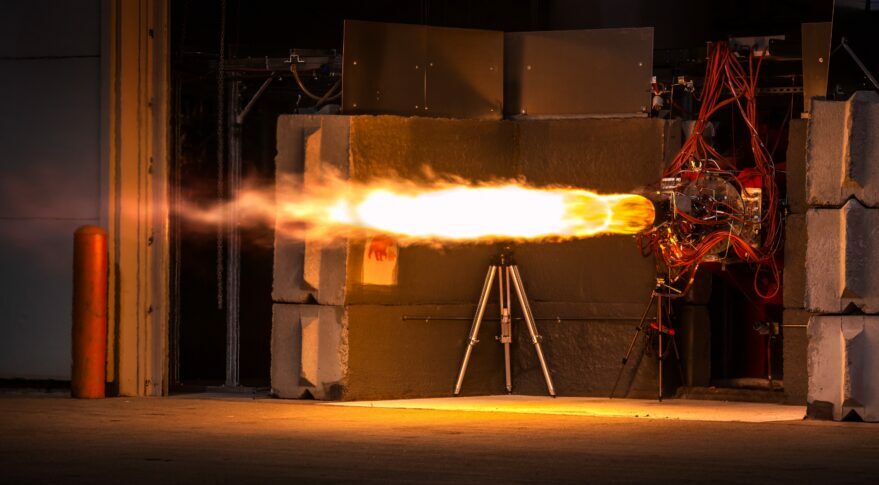Selection of space news for breakfast: Several hostile alien civilizations may be hiding in the Milky Way at once. China is offering to launch a new mission to search for inhabited worlds, and Perseverance is studying the wild winds of the Jezero crater.

NASA chooses manufacturers of new lunar spacesuits
NASA has chosen Axiom Space and Collins Aerospace to create next-generation spacesuits. They will be used for spacewalks from the ISS and during moon landings as part of the Artemis program. Initially, NASA planned to independently develop new spacesuits. But then the management of the organization preferred a model similar to the CAST (Crew Space Transportation) program. Within its framework, Boeing and SpaceX have received contracts for the development of new manned spacecraft designed to deliver people into orbit.
James Webb’s first photos be published on July 12
The first full-fledged photos taken by the James Webb Space Telescope (JWST) will be published on July 12. This is stated in a message on the NASA website. What exactly will be depicted in the first photos of JWST? The project participants are keeping it a secret for now. It is known that the targets for the footage are part of the list of objects approved long before the launch of the telescope. According to the scientists, when choosing them, they tried to adhere to the principle that the first photos of JWST should demonstrate the full potential of the telescope’s instruments and its technical capabilities.
Market News

Private American company announces new engine to replace unavailable Russian-made engines
Ursa Major, America’s only privately funded company that focuses solely on rocket propulsion, has introduced the latest in its line of engines. Arroway is a 91 tons thrust liquid oxygen and methane staged combustion engine that will serve markets including current U.S. national security missions, commercial satellite launches, orbital space stations, and future missions not yet conceived. The reusable Arroway engine is available for order now, slated for initial hot-fire testing in 2023, and delivery in 2025.
Analysts: NRO contracts will have long-term ripple effects on satellite imagery industry
The contracts recently awarded by the National Reconnaissance Office to BlackSky, Maxar Technologies and Planet for commercial satellite imagery will likely reshape the market, says a new report from Quilty Analytics, a research and consulting firm. Maxar’s contract is much larger than those of its competitors, but the spy agency’s decision to award 10-year deals is significant for all three firms, the report says. This extended period “raises the credit quality and capital attractiveness of all EOCL awardees.”
Long March 2C launches 9 navigation test satellites for Chinese automaker
A Long March 2C launched nine positioning and connectivity test satellites early Thursday, in a first step for a constellation to support autonomous driving for automaker Geely. A Long March 2C lifted off from the Xichang Satellite Launch Center in southwest China. The China Aerospace Science and Technology Corporation (CASC) confirmed launch success, revealing the payload to be GeeSAT-5 (01-09) for Geespace.
Geespace is a wholly owned subsidiary of automaker Geely Technology Group, which has first developed, produced and will operate the low-orbit commercial satellites.
Momentus attempting to fix anomalies with first Vigoride tug
A week after the launch of its first space tug, Momentus is still dealing with “anomalies” with the vehicle, but the company’s chief executive remains optimistic those issues will be resolved. The company said that while it had established contact with Vigoride, it had “some initial anomalies” engineers were working to resolve. It said it obtained a special temporary authority from the Federal Communications Commission to use “an unplanned frequency” to assist in resolving those problems.
China proposes alien planet mission to hunt habitable worlds by scanning wobbling stars
A proposed Chinese mission would look for nearby potentially habitable alien worlds by launching a spacecraft to make ultraprecise measurements of how orbiting planets make a star wobble. For this mission, called the Closeby Habitable Exoplanet Survey (CHES), the scientists would use a method called micro-arcsecond relative astrometry. This technique involves taking ultraprecise measurements of the positions and movements of stars compared with a set of background reference stars to detect the perturbations of a star resulting from the gravitational influence of exoplanets as they orbit their stars.
Interesting
NASA’s Perseverance Studies the Wild Winds of Jezero Crater
The rover’s weather sensors witnessed daily whirlwinds and more while studying the Red Planet. During its first couple hundred days in Jezero Crater, NASA’s Perseverance Mars rover saw some of the most intense dust activity ever witnessed by a mission sent to the Red Planet’s surface. Not only did the rover detect hundreds of dust-bearing whirlwinds called dust devils, Perseverance captured the first video ever recorded of wind gusts lifting a massive Martian dust cloud.
NASA’s MAVEN spacecraft resumes science and operations, exits safe mode
After more than three months of MAVEN downtime, the mission returned to normal operations on May 28, 2022. The navigation system failure that occurred at the beginning of 2022, which struck the NASA MAVEN interplanetary station, undermined the ability of this spacecraft to conduct scientific research and study the atmosphere of the Red Planet.
NASA previously assumed that the probe would operate until 2025, but now the agency has said it wants to use MAVEN’s relay capabilities during a planned mission to return soil samples collected by Perseverance on Mars. At the moment, this mission is planned for 2033.
4 hostile alien civilizations may lurk in the Milky Way, a new study suggests
But Earth is 100 times more likely to be destroyed by an asteroid than invaded by aliens. The Milky Way is home to millions of potentially habitable planets — and approximately four of them may harbor evil alien civilizations that would invade Earth if they could, new research posted to the preprint database arXiv.
Follow us on Twitter to get the most interesting space news in time
https://twitter.com/ust_magazine

